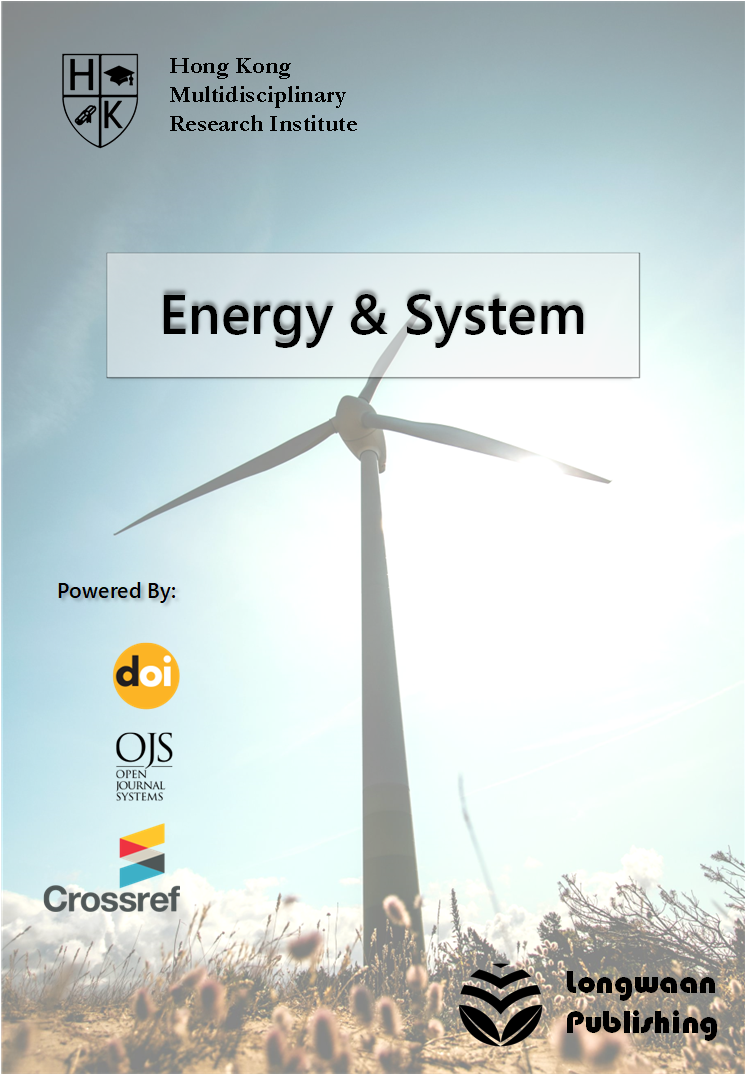Innovative Energy Management Strategies for Electric Vehicles: Optimizing Efficiency and Sustainability in Dynamic Operating Environments

Published 2024-12-10
Keywords
- Electric Vehicles,
- Energy Management,
- Machine Learning,
- Support Vector Machine,
- Dynamic Programming
- State-of-Charge ...More
How to Cite
Abstract
This paper conducts an in-depth investigation into advanced energy management strategies for electric vehicles (EVs), focusing on enhancing efficiency and sustainability in dynamic operating conditions. Leveraging data from authoritative sources such as the National Renewable Energy Laboratory (NREL), Electric Vehicle Database (EVD), OpenStreetMap (OSM), and Weather Data API, we developed a hybrid model that integrates machine learning and mathematical optimization techniques. The machine learning component utilizes a Support Vector Machine (SVM) to predict energy consumption based on historical data, while the optimization phase employs dynamic programming to minimize energy usage. Our methodology includes comprehensive steps of data preprocessing, model development, optimization, and validation, ensuring robust and accurate outcomes. The results reveal substantial improvements in energy consumption, state-of-charge (SOC) management, and prediction accuracy. Specifically, our optimized approach achieved an average efficiency enhancement of 13.8%, maintained SOC within optimal limits, and demonstrated low Root Mean Square Error (RMSE) values in energy consumption predictions. These findings highlight the efficacy of our strategies in significantly advancing the efficiency and sustainability of EVs across diverse operational scenarios.
References
- De-jin Min et al. (2022). Genetic algorithm optimized neural network based fuel cell hybrid electric vehicle energy management strategy under start-stop condition. Applied Energy. https://doi.org/10.1016/j.apenergy.2021.118036
- Yong Wang et al. (2021). Hybrid Electric Vehicle Energy Management With Computer Vision and Deep Reinforcement Learning. IEEE Transactions on Industrial Informatics, 17, 3857-3868. https://doi.org/10.1109/TII.2020.3015748
- Amier Ibrahim, F. Jiang (2021). The electric vehicle energy management: An overview of the energy system and related modeling and simulation. Renewable and Sustainable Energy Reviews. https://doi.org/10.1016/J.RSER.2021.111049
- X. Hu et al. (2019). Reinforcement Learning for Hybrid and Plug-In Hybrid Electric Vehicle Energy Management: Recent Advances and Prospects. IEEE Industrial Electronics Magazine, 13, 16-25. https://doi.org/10.1109/MIE.2019.2913015
- K. Qureshi et al. (2021). Electric-vehicle energy management and charging scheduling system in sustainable cities and society. Sustainable Cities and Society, 71, 102990. https://doi.org/10.1016/J.SCS.2021.102990
- C. Musardo et al. (2005). A-ECMS: An Adaptive Algorithm for Hybrid Electric Vehicle Energy Management. Proceedings of the 44th IEEE Conference on Decision and Control, 1816-1823. https://doi.org/10.3166/ejc.11.509-524
- Renzong Lian et al. (2020). Cross-Type Transfer for Deep Reinforcement Learning Based Hybrid Electric Vehicle Energy Management. IEEE Transactions on Vehicular Technology, 69, 8367-8380. https://doi.org/10.1109/TVT.2020.2999263
- Weizheng Wang et al. (2023). Secure-Enhanced Federated Learning for AI-Empowered Electric Vehicle Energy Prediction. IEEE Consumer Electronics Magazine, 12, 27-34. https://doi.org/10.1109/MCE.2021.3116917
- Jinquan Guo et al. (2019). ARIMA-Based Road Gradient and Vehicle Velocity Prediction for Hybrid Electric Vehicle Energy Management. IEEE Transactions on Vehicular Technology, 68, 5309-5320. https://doi.org/10.1109/TVT.2019.2912893
- Zhijie Su et al. (2023). Energy-Efficiency Optimization for D2D Communications Underlaying UAV-Assisted Industrial IoT Networks With SWIPT. IEEE Internet of Things Journal, 10, 1990-2002. https://doi.org/10.1109/JIOT.2022.3142026
- Jia Li et al. (2022). Efficiency Optimization Scheme for Isolated Triple Active Bridge DC–DC Converter With Full Soft-Switching and Minimized RMS Current. IEEE Transactions on Power Electronics, 37, 9114-9128. https://doi.org/10.1109/TPEL.2022.3157443
- Reza Tavakoli et al. (2022). Cost-Efficiency Optimization of Ground Assemblies for Dynamic Wireless Charging of Electric Vehicles. IEEE Transactions on Transportation Electrification, 8, 734-751. https://doi.org/10.1109/TTE.2021.3105573
- Yuhua Su et al. (2022). Spectrum and Energy Efficiency Optimization in IRS-Assisted UAV Networks. IEEE Transactions on Communications, 70, 6489-6502. https://doi.org/10.1109/TCOMM.2022.3201122
- Fangyuan Xing et al. (2022). Energy Efficiency Optimization for Rate-Splitting Multiple Access-Based Indoor Visible Light Communication Networks. IEEE Journal on Selected Areas in Communications, 40, 1706-1720. https://doi.org/10.1109/jsac.2022.3145818
- Tianqi Wang et al. (2022). An SCA and Relaxation Based Energy Efficiency Optimization for Multi-User RIS-Assisted NOMA Networks. IEEE Transactions on Vehicular Technology, 71, 6843-6847. https://doi.org/10.1109/TVT.2022.3162197
- Weidang Lu et al. (2021). Energy Efficiency Optimization in SWIPT Enabled WSNs for Smart Agriculture. IEEE Transactions on Industrial Informatics, 17, 4335-4344. https://doi.org/10.1109/TII.2020.2996672
- Lu Zhou et al. (2021). Wide-Load Range Multiobjective Efficiency Optimization Produces Closed-Form Control Solutions for Dual Active Bridge Converter. IEEE Transactions on Power Electronics, 36, 8612-8616. https://doi.org/10.1109/TPEL.2021.3054970
- Jianzhong Zhang et al. (2020). A Wireless Power Transfer System With Dual Switch-Controlled Capacitors for Efficiency Optimization. IEEE Transactions on Power Electronics, 35, 6091-6101. https://doi.org/10.1109/TPEL.2019.2950218
- Chunling Luo et al. (2021). Modelling and estimation of system reliability under dynamic operating environments and lifetime ordering constraints. Reliab. Eng. Syst. Saf., 218, 108136. https://doi.org/10.1016/j.ress.2021.108136
- Antti Tenhiälä, P. Helkiö (2012). Effects of ERP System-Based Manufacturing Planning and Control in Dynamic Operating Environments https://doi.org/10.5465/AMBPP.2012.267
- William T. Scorse, A. Crassidis (2011). Robust Longitudinal and Transverse Rate Gyro Bias Estimation for Precise Pitch and Roll Attitude Estimation in Highly Dynamic Operating Environments Utilizing a Two Dimensional Accelerometer Array https://doi.org/10.2514/6.2011-6447
- Xian Zhao et al. (2022). Joint modeling of loading and mission abort policies for systems operating in dynamic environments. Reliab. Eng. Syst. Saf., 230, 108948. https://doi.org/10.1016/j.ress.2022.108948
- Ancha Xu et al. (2021). A Unified Model for System Reliability Evaluation Under Dynamic Operating Conditions. IEEE Transactions on Reliability, 70, 65-72. https://doi.org/10.1109/TR.2019.2948173
- John M. Stawasz (2005). An information-based metric for a human-machine control system in dynamic operating environments
- Jiaoyang Chen et al. (2023). Transparent High‐Performance Supramolecular Plastics Operating in All‐Weather Environments. Advanced Functional Materials, 33. https://doi.org/10.1002/adfm.202212564
- Lanqing Hong et al. (2019). System Reliability Evaluation Under Dynamic Operating Conditions. IEEE Transactions on Reliability, 68, 800-809. https://doi.org/10.1109/TR.2018.2869572
- Linh Kästner et al. (2022). Arena-Bench: A Benchmarking Suite for Obstacle Avoidance Approaches in Highly Dynamic Environments. IEEE Robotics and Automation Letters, 7, 9477-9484. https://doi.org/10.1109/LRA.2022.3190086
